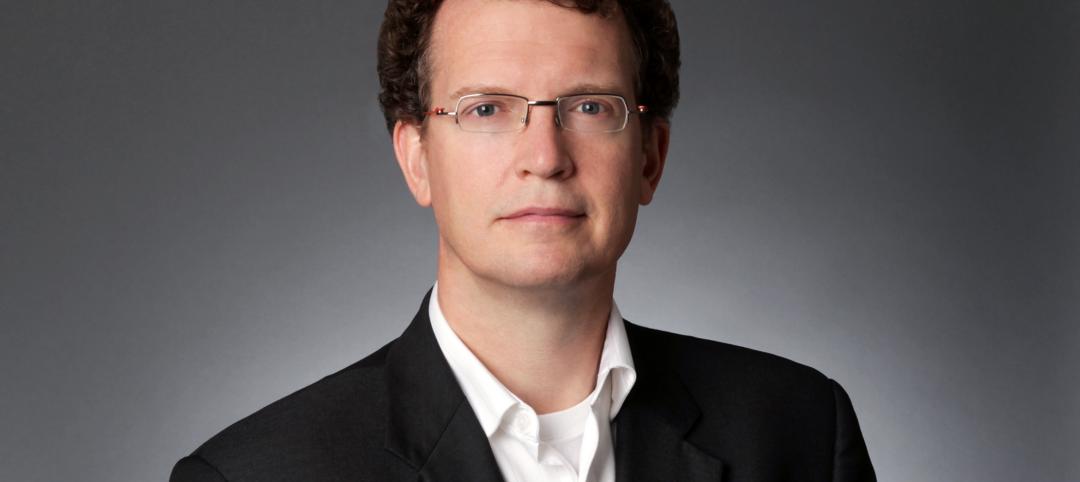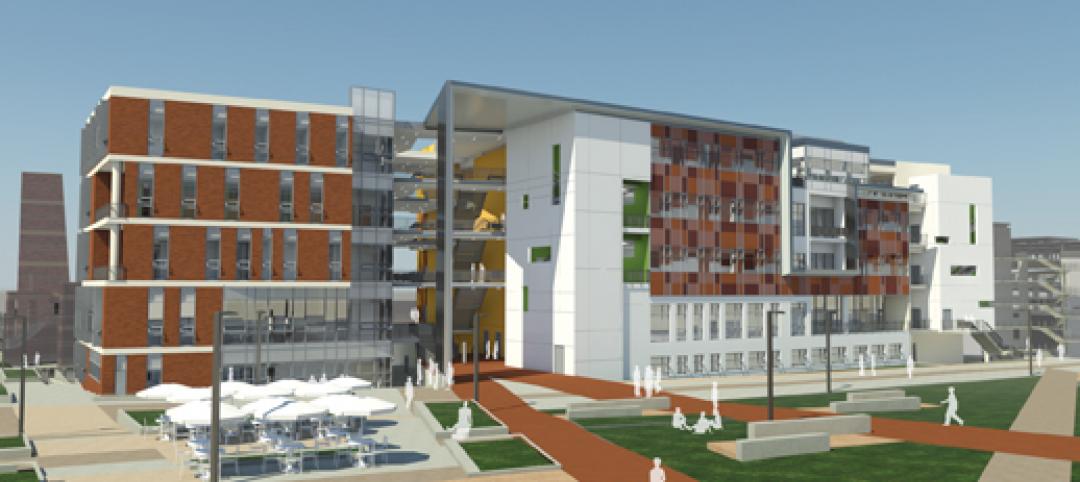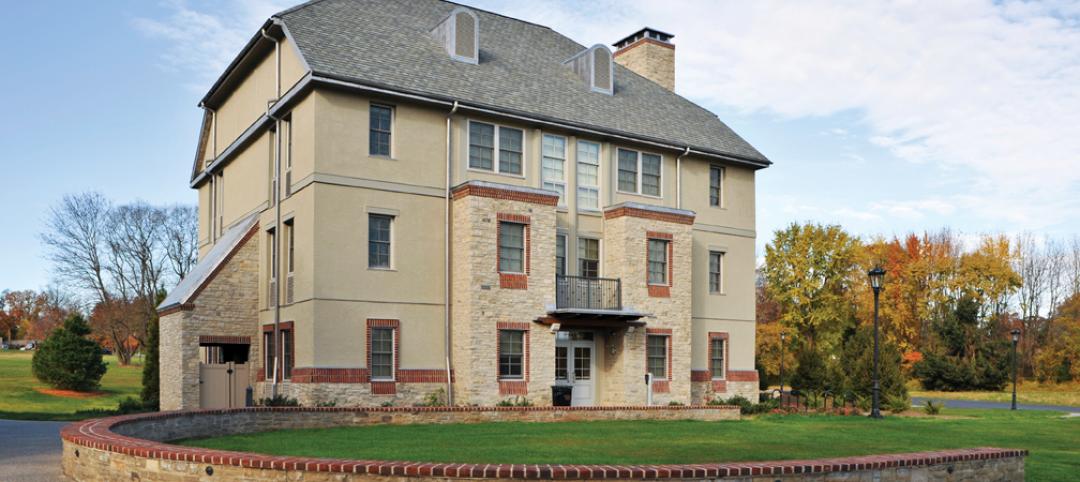Forty-five percent of the country's elementary, middle, and high schools were built between 1950 and 1969 and will soon reach the end of their usefulness, according to the 2005–2008 K-12 School Market for Design & Construction Firms, published by ZweigWhite, a Massachusetts-based market-research firm.
Almost 30% of U.S. schools were built before 1950 and need major modernization because enrollments continue to increase. Between 1988 and 2004, the number of students in public and private K-12 schools increased almost 20%, from 44 million to 54 million, according to the National Center for Education Statistics. That trend is expected to continue as new immigrants and the children of baby boomers enter secondary schools.
According to ZweigWhite, increasing numbers of school districts are demanding new facilities in response to enrollment growth. American School & University magazine estimates $89.8 billion in K-12 construction will be completed by 2006. Of that, $56.9 billion will be new work.
"It's definitely one of the stronger markets we've seen for firms," with Florida and California leading the way, said Christopher Klein, managing editor of the report and a ZweigWhite principal. "Of the 25 different market sectors we rank in our annual AEC industry outlook, [schools] ranked just behind healthcare and higher education in the top three."
Market trends providing unique opportunities in K-12 construction include:
-
New financing mechanisms, such as public-private partnerships
-
More technologically advanced and collaborative learning schools
-
Greater use of sustainable building designs
-
Designing schools that also serve as community centers
-
Improvements in school security
New finance mechanisms. To finance new construction and major renovations, some school districts are bringing in private investors through lend-lease agreements. These deals create public/private partnerships that are not subject to state requirements for multiple contractors and open bidding. School districts can also circumvent bonding limits and exempt building projects from federal tax using these financing instruments.
Niagara Falls High School became the first privately financed, privately managed school construction project in New York State last year. The school district currently leases the school for $4.8 million a year from private partner Honeywell International. Ownership transfers to the school district in 27 years.
"It's something that's occurring as a novelty in the marketplace right now," said Klein. "The driver, of course, is getting funding to build these new facilities that otherwise wouldn't be there."
Klein says new funding is also coming from foundations, such as the Bill and Melinda Gates and Carnegie foundations. These institutions donate large sums to create high-tech environments in even the lowest grades.
Technology improvements. The ZweigWhite report predicts technology will dominate new school construction, with cost-control measures such as distance education over the Internet, and basic education programs delivered through computers, networks, and software. Smaller class sizes and changes in teaching methods (such as providing alcoves or flexible spaces with fewer hard walls) will continue the trend of smaller groups, collaborative instruction, and more sustainable designs.
Sustainable design or green building elements that firms can use in K-12 schools include designs that reduce the reliance on automobiles, use alternate energy sources, and orient school buildings to take advantage of sunlight. The number of school projects registered under the U.S. Green Building Council's LEED rating program grew from 52 in 2003 to 124 in April 2005.
The most important of the environmental elements addressed by sustainable design for schools, according to ZweigWhite, is indoor air quality. Recent lawsuits claimed that mold had sickened children in two Florida school districts.
"There's now a pretty decent awareness among architects, builders, and facilities managers of sustainable design in K-12 construction," Klein said. "I suspect you will see that awareness broaden out as new projects continue to be built and the idea of sustainable design reaches the school boards and the people running schools."
Community use of schools. More community members—such as theater groups and senior citizens—are using K-12 schools for everything from libraries to athletic, computer, and art facilities. Opening up K-12 schools for use by community groups is helping to broaden support for school bond measures, particularly among voters who do not have children in schools. Firms will need to design and create structures for more intense use and flexibility, the report claims.
Security demands. At the same time schools are opening their doors to greater community use, there is equally strong emphasis to build more secure schools in the face of Columbine-like school violence and terrorism. Firms will have to balance the openness of a community center with design concepts like territorial reinforcement (giving users a sense of control), natural access control (denying access to crime targets and creating a perception of risk in offenders), and target hardening (dead bolts and other visible security features).
"There is steam left in (the growing school market)," says Klein. "All the drivers point to major construction, especially in the 9–12 market."
Related Stories
| Mar 5, 2012
Perkins Eastman pegs O’Donnell to lead K-12 practice
O’Donnell will continue the leadership and tradition of creative design established by firm Chairman and CEO Bradford Perkins FAIA, MRAIC, AICP in leading this market sector across the firm’s 13 offices domestically and internationally.
| Dec 27, 2011
USGBC’s Center for Green Schools releases Best of Green Schools 2011
Recipient schools and regions from across the nation - from K-12 to higher education - were recognized for a variety of sustainable, cost-cutting measures, including energy conservation, record numbers of LEED certified buildings and collaborative platforms and policies to green U.S. school infrastructure.
| Dec 5, 2011
RJM Construction begins building Nova Classical Academy in St. Paul
As the general contractor, RJM is constructing the 94,000-sf building that will consolidate the St. Paul school’s two other locations.
| Sep 23, 2011
Under 40 Leadership Summit
Building Design+Construction’s Under 40 Leadership Summit takes place October 26-28, 2011 Hotel at the Monteleone in New Orleans. Discounted hotel rate deadline: October 2, 2011.
| Sep 12, 2011
LACCD’s $6 billion BIM connection
The Los Angeles Community College District requires every design-build team in its massive modernization program to use BIM, but what they do with their 3D data after construction is completed may be the most important change to business as usual.
| Jul 22, 2011
Five award-winning modular innovations
The Modular Building Institute's 2011 Awards of Distinction highlight fresh ideas in manufactured construction projects.
| May 18, 2011
Former Bronx railyard redeveloped as shared education campus
Four schools find strength in numbers at the new 2,310-student Mott Haven Campus in New York City. The schools—three high schools and a K-4 elementary school—coexist on the 6.5-acre South Bronx campus, which was once a railyard.
| May 18, 2011
Eco-friendly San Antonio school combines history and sustainability
The 113,000-sf Rolling Meadows Elementary School in San Antonio is the Judson Independent School District’s first sustainable facility, with green features such as vented roofs for rainwater collection and regionally sourced materials.
| May 18, 2011
New Reform Jewish Independent school opens outside Boston
The Rashi School, one of only 17 Reform Jewish independent schools in North American and Israel, opened a new $30 million facility on a 166-acre campus shared with the Hebrew SeniorLife community on the Charles River in Dedham, Mass.
















